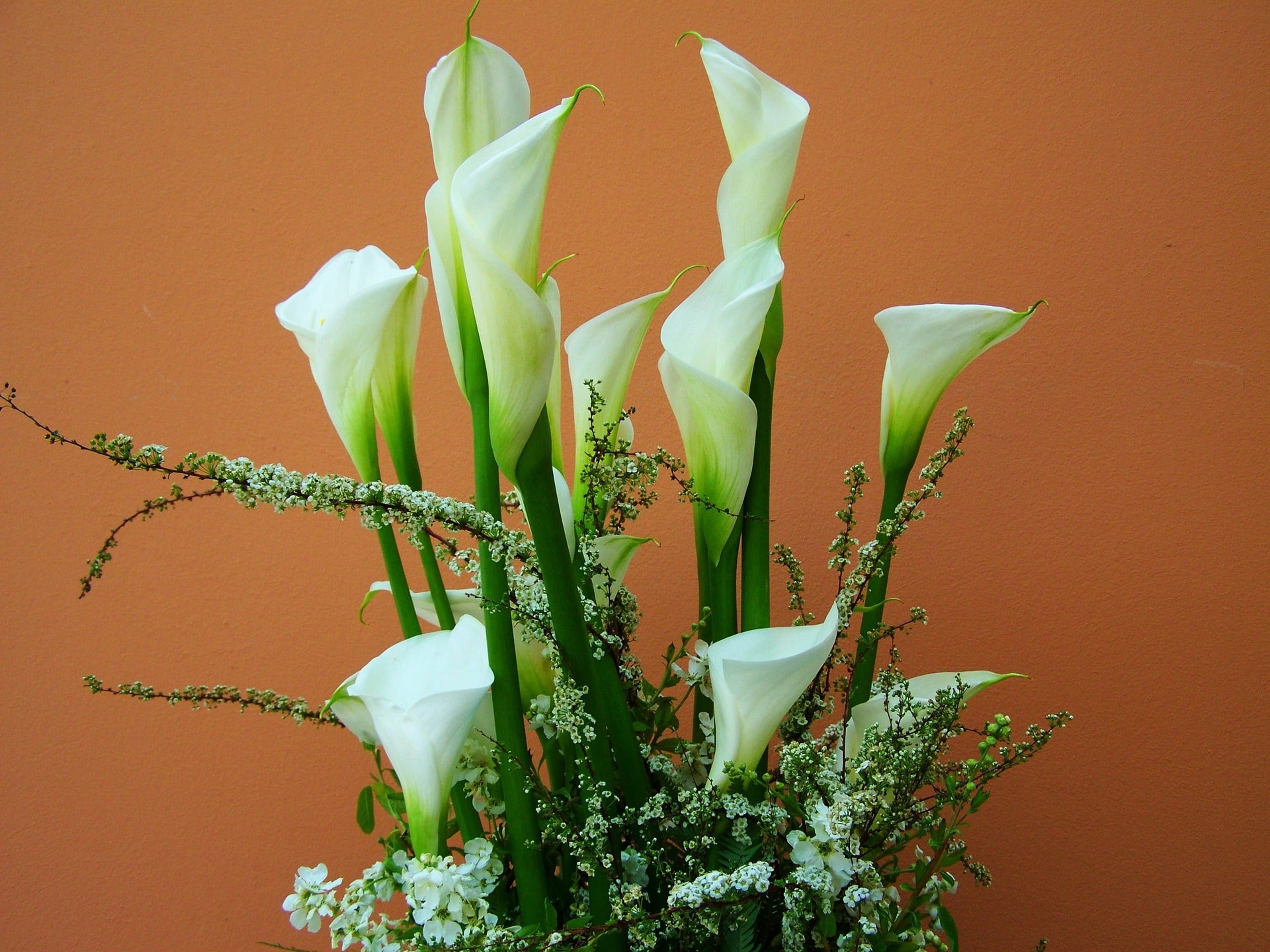Flowering Potted Plant Care and Reflowering Tips
Feb 01, 2021
Good care and room temperatures between 65-75° F will encourage any new flowering house plant to bloom at its fullest and longest. So, when you first bring a flowering plant home, start by checking its care card. Follow the directions, and your plant should keep blooming well until all its buds are spent. Once flowering has stopped, it’s time to take new steps to keep it thriving and blooming for years to come.
At Plants.com, we carry lots of flowering plants, some are hardy shrubs, bulbs, and perennials that are bought in full bloom for indoor enjoyment and later planted outdoors for long term enjoyment. Others are tropical house plants that can live year-round indoors. Here are the best methods for getting each to flower well and rebloom.
Tropical Flowering Plants Care and Reflowering Tips
Red Anthurium (Anthurium andraeanum), or flamingo flower, arrives in full bloom with its unusual, long-lasting flowers with glossy scarlet bracts and yellow centers. Closely-related Peace Lilies (Spathiphyllum cochlearispathum) arrive in the same state of glorious bloom, with their pleasing white-bracted blooms. Both plants are free-flowering, grow similarly, and help purify the air while they are at it! As old blooms fade, clip them off as a maintenance step. Provide both plants with bright, indirect light (lower light levels are tolerated but halt flowering) and enough water to keep the pots evenly moist. Warm, tropical temperatures of 65-90°F and moderate to high humidity will keep plants lush. Apply an all-purpose fertilizer as directed.
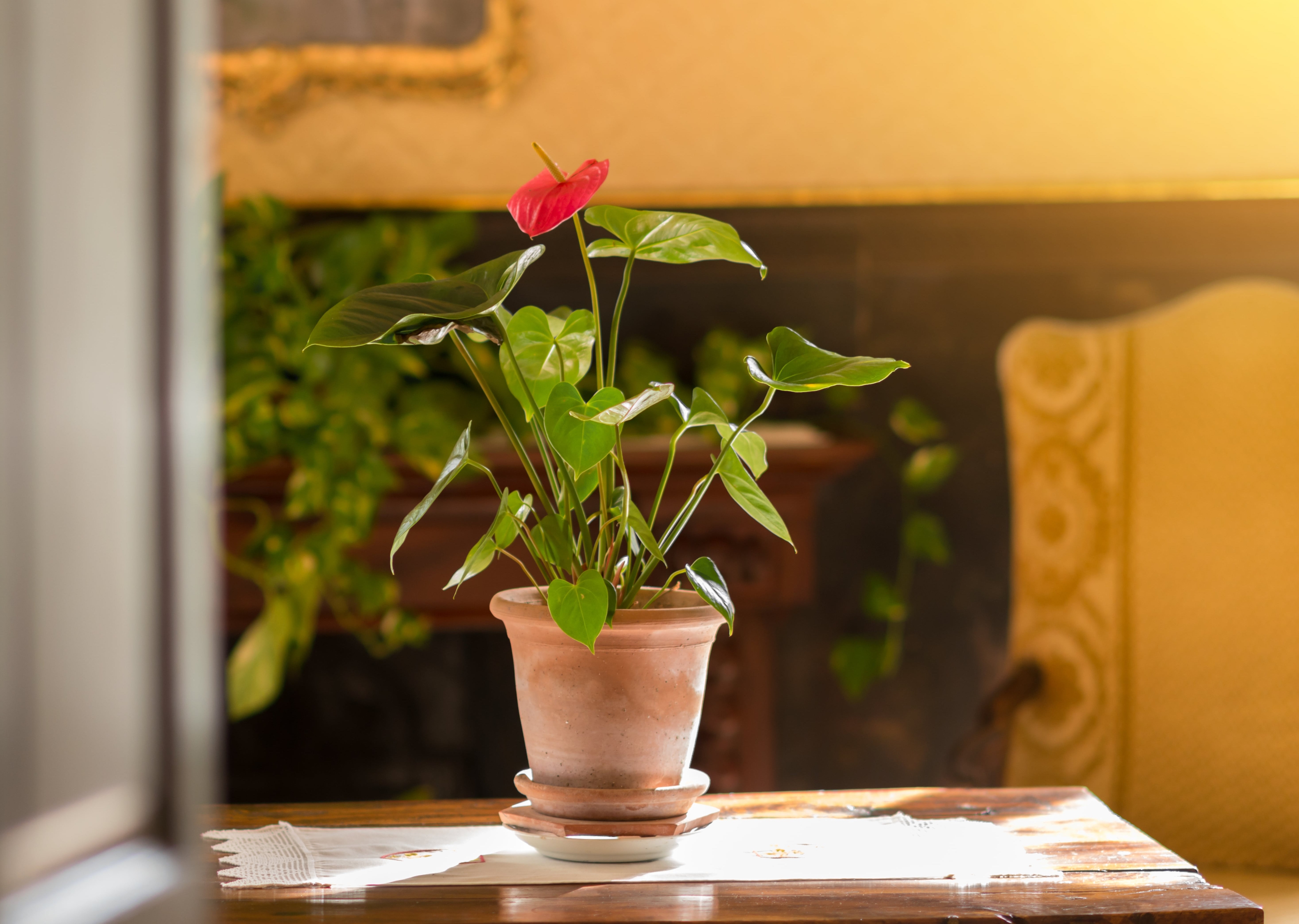
African Violets (Saintpaulia hybrids) can live for many years and bloom almost continuously with good care. Ours arrive in bud or bloom. For best looks, trim off old blooms to encourage new and remove damaged leaves. Bright indirect light is best (too much light will burn leaves and too little will inhibit flowering). Keep the pots evenly moist with filtered or bottled water, never tap, and keep leaves dry at watering time. Let the upper soil layer become dry between watering. Apply African violet fertilizer as directed, maintain 50-60% humidity and mild temperatures (65-75° F), and your plants should flower well.

Potted Bromeliads (Guzmania or Tillandsia ‘Antonio’) arrive in bud or flower. Colorful, long-lasting blooms make these rainforest natives especially attractive house plants. Cut back dead flowers to encourage new rosettes of foliage to develop, and remove any old, browning rosettes. High humidity and warmth (70-80° F) will ensure lush foliage. Provide plants with bright, indirect light and maintain slightly moist potting soil. Let the upper soil layer become dry between watering. Mist plants regularly, apply a bromeliad fertilizer as directed, and they will rebloom every one to three years.
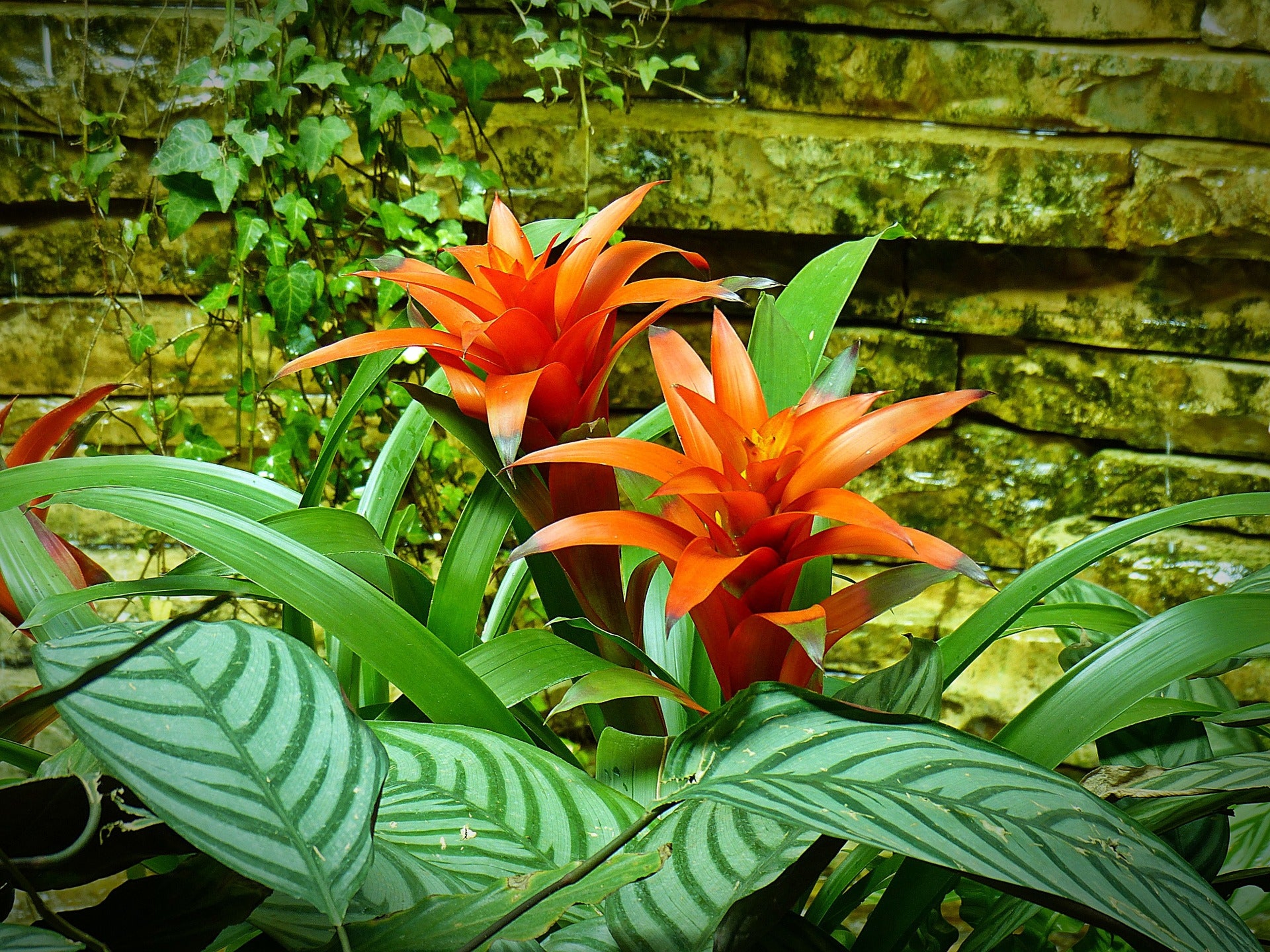
Hardy Flowering Plants Care and Reflowering Tips
Potted Easter Lilies (Lilium longiflorum, Zones 4-8) are popular springtime potted perennials. Trim off the old blooms to keep plants. Lots of buyers make the mistake of throwing these lilies away after flowering, but they are remarkably hardy and make beautiful additions to flower gardens. Once flowering has ceased and frosts have passed (click here for your frost date), plant them outdoors in full sun and fertile, well-drained garden soil. Apply bulb fertilizer as directed at planting time. The following year your “Easter” lilies will naturally flower in the garden from early to midsummer.

Potted bulbs (Daffodils, Hyacinths, Grape Hyacinths, Zones 4-8) bring spring fragrance and color into the home. When flowering stops, place pots in a cool indoor space until spring frosts have ended. (The foliage will turn brown after the flowers have bloomed, so don’t worry. As long as the bulbs are firm beneath their papery coverings, they are healthy.) Choose a sunny garden spot with soil that drains well. Plant grape hyacinth bulbs 4 inches deep and daffodil and hyacinth bulbs 6 inches deep. Apply bulb fertilizer at planting time. The following spring, your bulbs should pop up and flower again.
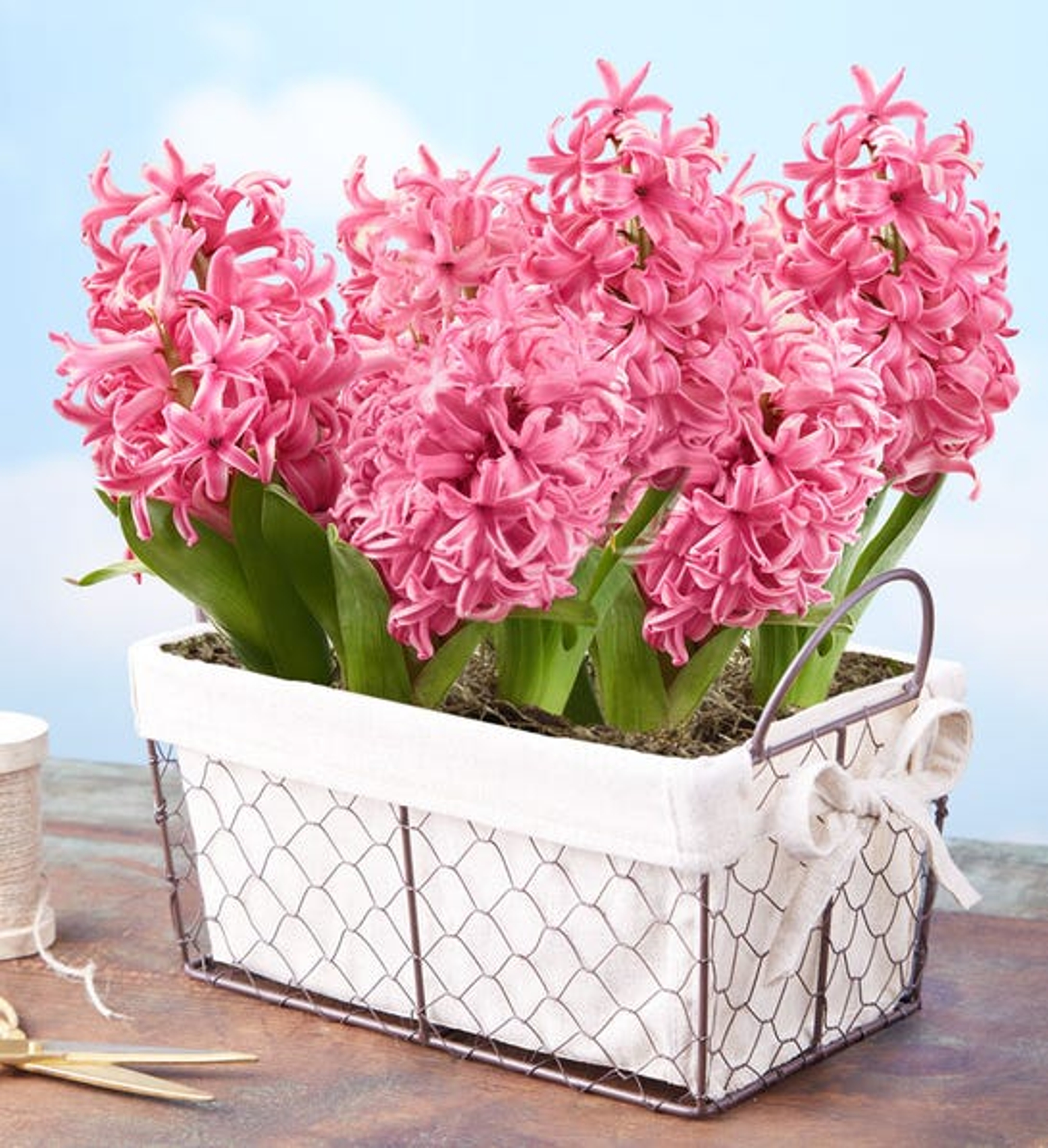
French Lavender (Lavandula stoechas, Zones 8-10) has a calming aroma and cool purple flowers. They grow and flower best in a sunny location and prefer well-drained pots filled with soil that is allowed to become quite dry between watering. Trim off the old flowers to encourage new buds. In Zones 8-10, they can be planted in the garden in late spring. Otherwise, keep French lavender outdoors in summer to enjoy as a potted patio specimen, and bring it back inside when fall temperatures become chilly. With good care, they should continue to flower off and on throughout the year. Apply all-purpose fertilizer, as instructed on the package.
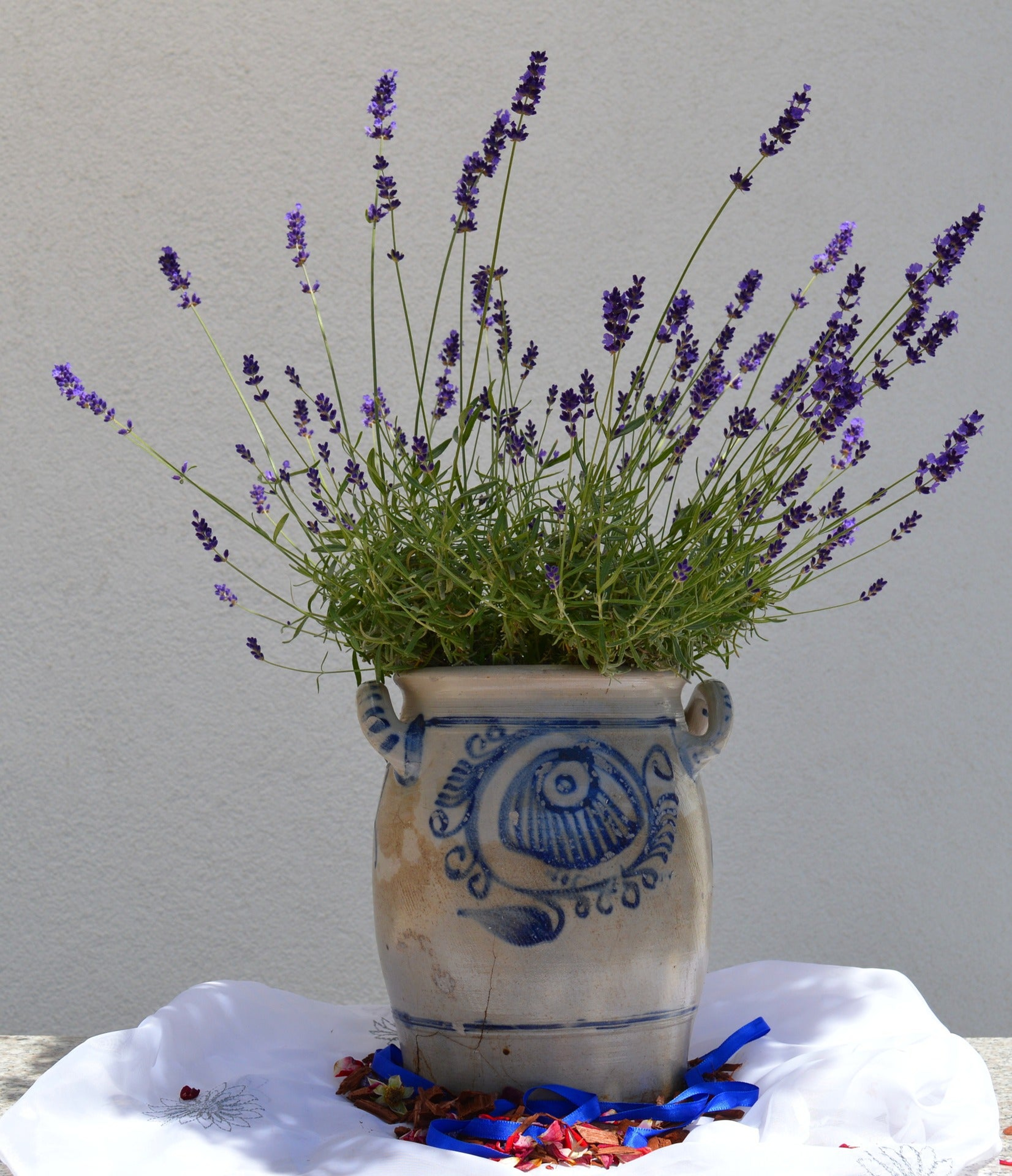
Miniature Roses (Rosa hybrid, Zones 6-9) with classic double blooms are lightly fragrant, colorful, and make good gifts. When the weather is warm, these small, everblooming shrubs can be planted outdoors to brighten any container garden or flower bed. Plant and care for them as you would French lavender, and feed them with a fertilizer formulated for roses. Wear garden gloves to protect your hands from their small, sharp thorns.

Bigleaf Hydrangeas (Hydrangea macrophylla, Zones 7-11) arrive at your home with large flower clusters that can last for weeks when plants are provided partial sunlight and kept watered when pots become slightly dry. Once the flowerheads start to turn brown, trim them off, and consider whether you want to maintain the hardy shrubs in a container or the garden. They can be planted in the garden when the threat of frost has passed. Choose a partially sunny spot that can accommodate a 3-to-4-foot shrub. Dig a hole no deeper than the depth of the pot, remove the hydrangea from its plastic container, set it in the ground, and completely cover its roots--being sure to remove all air pockets. Water it in well and feed with an all-purpose fertilizer. If you live in a zone colder than 7, plant them in a large, sturdy, well-drained pot filled with quality potting soil. Care for them outdoors through summer and fall, and bring them indoors after they have been subjected to mild frosts and cold night temperatures for several weeks. This should encourage them to flower anew in late winter or spring.
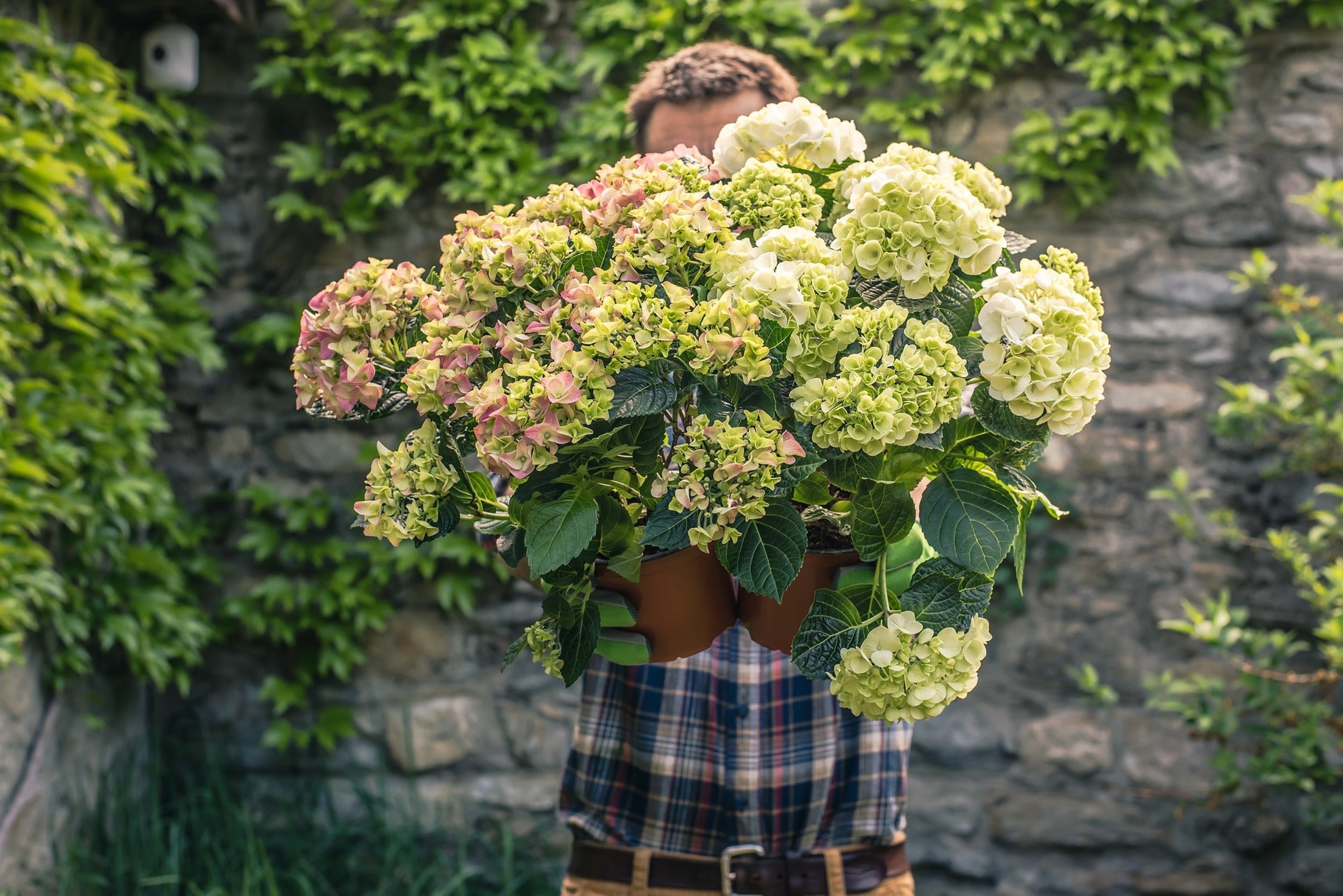
Potted Azaleas (Rhododendron hybrid, Zones 7-10) are compact shrubs that flower for weeks before stopping. Once they have stopped blooming, trim off the old blooms, and care for them and plant them as you would bigleaf hydrangea in all ways except fertilization. Azaleas are acid-loving plants that require rhododendron fertilizer specially formulated for their needs.
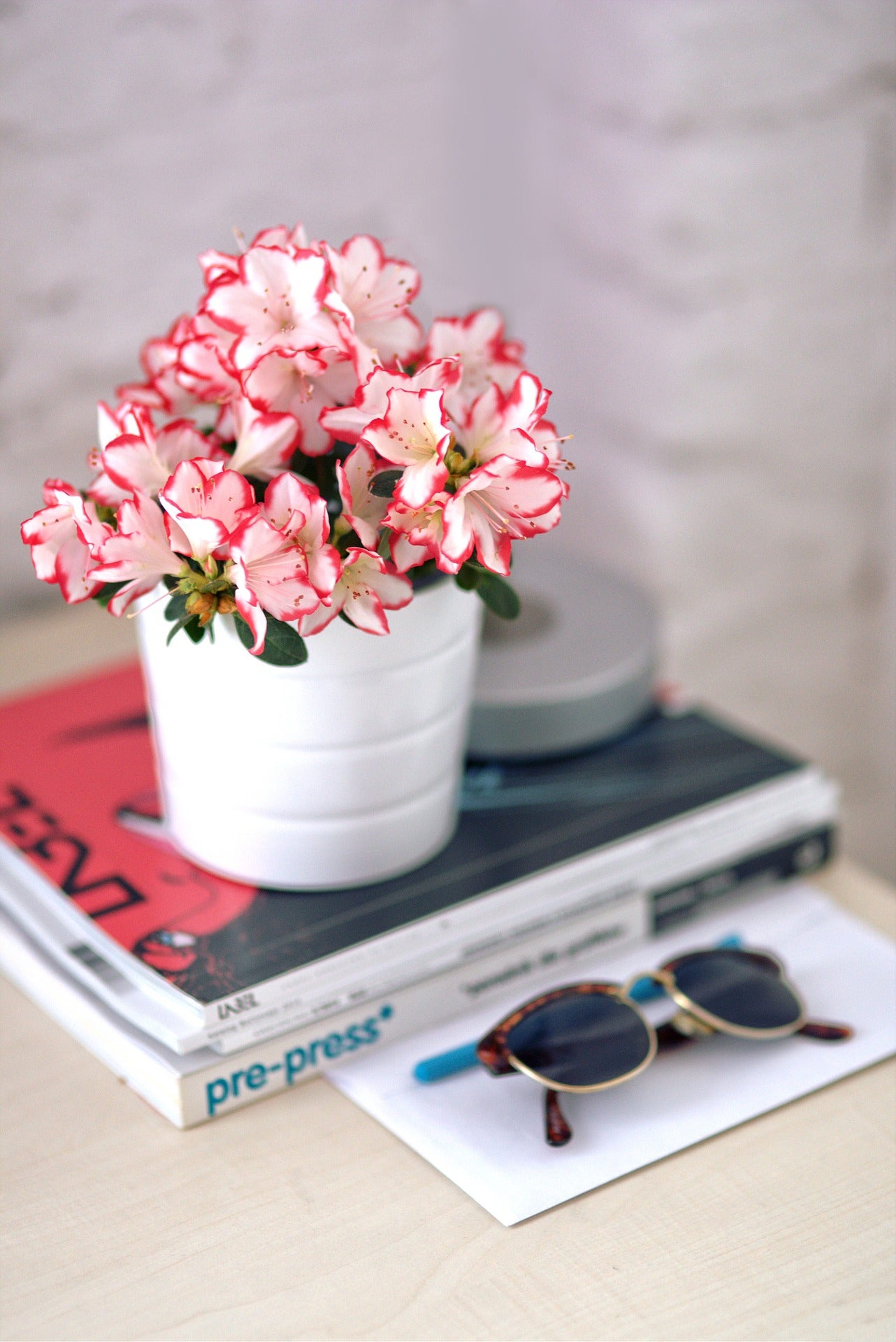
Calla Lilies (Zantedeschia hybrid, Zones 8-10) offer weeks of blooms when provided bright, indirect light and ample water. After flowering, remove the old blooms. The plant’s sword-shaped foliage will continue to look pretty until the leaves start to naturally die back. At this point, store the pot in a cool dark place unwatered until late spring. Then you can plant the potted calla bulb in an outdoor container or garden and begin to water again. The plants should emerge anew and flower once more. An application of bulb fertilizer at planting time will encourage strong growth. If you live in a colder zone, we recommend maintaining the bulbs in a container from year-to-year.
